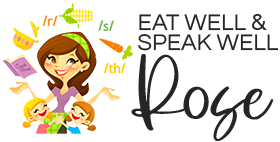
Each May, The American Speech and Hearing Association promotes Better Hearing and Speech Month! In celebration, I added a unique and engaging activity to my TpT store geared toward the elementary population. It’s FREE, fun, and motivating, while promoting good speech and language, during the month of May. I composed a poem and gave it a little twist. I’ve added my very first audio activity to my TpT store!! It’s a poem, it’s a rap, it’s a rhythm, and it’s a fun way to practice speech skills and language concepts! I employed the help of a couple of young and willing volunteers (thank you to my son and niece!) and together we created a BHSM Poetry Rap!
You can visit my TpT store to download your FREE audio copy of my poetry rap. Use this catchy tune to promote a positive message while working on a variety of skills with your students!! (Be sure to have Windows Media Player downloaded to your computer to view this file.)
Use the rap to address the following areas:
•Search for rhyming word pairs
•Listen for all the words that contain their targeted speech sound
•Address good listening and comprehension skills by asking questions about the information in each section of the poem.
•Target written language by asking your students to create their own lyrical ending for the poem.
You can also download the printed version of this activity so that you can print out a hard copy for reference here. Looking to save ink and paper? Display the lyrics on an iPad or Smartboard!
Do you incorporate music into your speech/language sessions? Here’s some evidence to support the value of using music in your therapy room:
- Research indicates the entire brain is active when participating in music. There is no specific music center.
- Research indicates that music facilitates the retention of new information and has positive emotional and psychological benefits.
- Researchers believe that music instruction impacts a student’s brain functioning in processing language, which in turn impacts reading subprocesses like phonemic awareness and vocabulary. These subprocesses ultimately impact a student’s ability to read with comprehension.
- Musical activities are cited by researchers as effective experiences for building listening skills in the classroom (Hirt-Mannheimer, 1995; Wolf, 1992), for both mainstream classrooms and classrooms with children who have disabilities. (Humpal & Wolf, 2003). Recent brain research (Flohr et al, 1996) shows that music training changes and improves brain functioning related to listening.
- Researchers have recently verified that musical instruction can have an exciting impact on young children’s phonological awareness. Many top educational researchers recommend integrating music into phonological awareness instruction. These researchers recommend songs, specifically rhyming songs, as an effective mechanism for building phonemic awareness with children in early childhood classrooms (Adams, Foorman, Lundberg & Beeler, 1998; Ericson & Juliebo, 1998; Yopp & Yopp, 1997)
- Components of a verbally enticing song include: You can find more amazing evidence to support the value of music in the development of speech and language in this comprehensive document from ABC Music and Me
- Frequent repetitions
- Songs that invite participation
- Raps and rhythms
- Songs within the child’s verbal ability
- Natural musical flow of words and phrases
Although my poem was made with your younger students in mind, music certainly can effectively be incorporated into lessons with older students. Song lyrics are a great way to address vocabulary, inferencing skills, and figurative language. I especially look for songs that have lyrics that contain a positive and inspirational message. Additional inspiration for creating this poetry rap came from The Mayhem Poets, (a field trip my son’s class attended when he was in middle school). This trio of 20-something-year-old poets rapped and rhymed about every topic under the sun from politics, to fast food to homework and their target audience is middle and high school students. It was a great way to engage older students and get them excited about discussions on current events and age-appropriate topics!
Need more evidence on the effectiveness of music, rap, and rhyme in language development? Check out the audio/video program Flocabulary! Flocabulary uses music, rhythm, and rhyme to teach concepts in many subject areas from grades K-12. Flocabulary uses music to facilitate memorization and recall of academic content, while the use of hip-hop and other culturally-relevant media increases student engagement. I was introduced to this musical tool years ago when my son’s teacher used it to help the class learn the parts of speech and literary devices. He was rambling off the details of these language concepts in no time with Flocabulary. There are some free demos as well as options to purchase a subscription available on their site.
…..And if you are looking for more activities to help promote
Better Hearing and Speech Month in your school, take a look at this product in my store:
The packet includes fun language-based ideas that can be used across a variety of age/grade levels: 1—Read the BHSM poem (written by yours truly) with your students and use the follow-up page to identify rhyming words, and synonyms and to explain the idiom all found within the poem. (pages 3-4) {this activity would be suitable for upper elementary/middle and even high school students} 2—Make the “I’m a Good Communicator” craftivity using the avatars, name tags, and speech bubbles included. Display your student’s finished projects in the halls, on the door, or in your therapy room to help publicly promote BHSM in your school. (pages 5-12: includes avatars, name tags, speech bubbles) {Use this activity with a variety of levels-Pre-K through middle school and adapt accordingly} 3— Speech and Hearing Fun Facts and Opinions— Use the information sheet as a review/reference to identify which of the 36 cards are fact and opinion statements about speech, language, and hearing. Use the included sorting mat to organize which category the cards belong in. These cards can also be used to help educate and increase awareness among your school staff about speech, language, and hearing information! Answer key included. (pages 13-19) {use with older students and school staff} 4–-My Year in Review—A Speech & Language “Snapshot” consists of sentence starters to create a “snapshot” of your student’s experience in speech/language therapy. Have students share/discuss their responses. (page 20) {suitable for K-high school}













You are awesome! Incredible. What more can I say?